What is a Glue Collagraph Ghost Print?
Plotting a Course is a glue collagraph ghost print. (The process shots begin at the bottom of this post) I’ve added watercolor to the ghost print after the ink dried.
The reference image (below) was snapped in the early 80’s, showing my stepdad, TC, sitting in the cockpit of his Cape Dory sailboat, studying a paper chart.
The subject is someone near and dear to me, but I also like the geometry of the marina and boat parts around him. There isn’t a discernible boat in the composition, but if you’ve been around boats at all (have you?), the lines, sailcloth, and canvas dodger hint at a nautical environment.
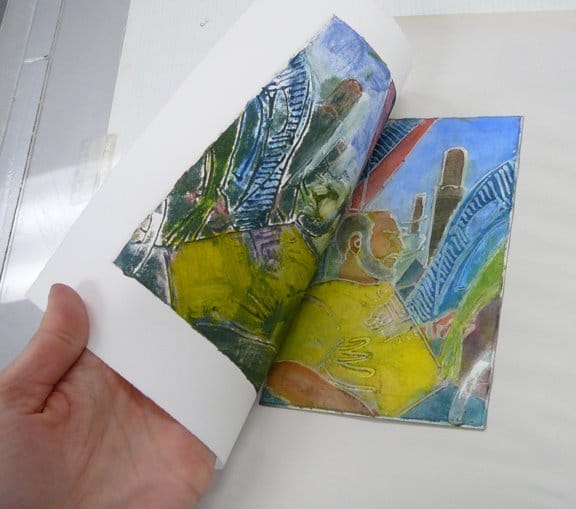
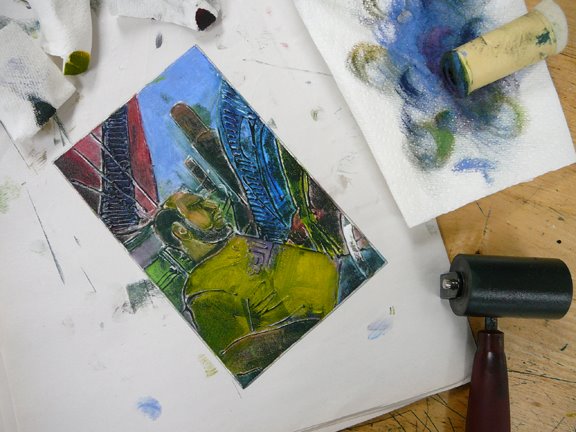
A Few Collagraph Resources
I’m thinking about making a demo video of this glue collagraph process on my YouTube channel. Are you interested in seeing the step-by-step process in motion?
Let me know in the comments, and leave any other questions you have about making a glue collagraph.
Thanks for stopping by, and I’ll see you in the next post –
Belinda
Art Quote
Write while the heat is in you. The writer who postpones the recording of his thoughts uses an iron which has cooled to burn a hole with. He cannot inflame the minds of his audience.
Henry David Thorough (1817-1862)

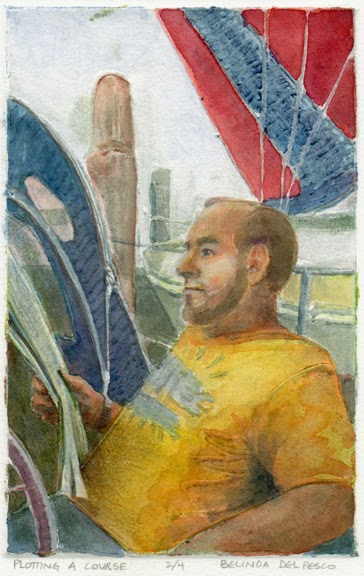
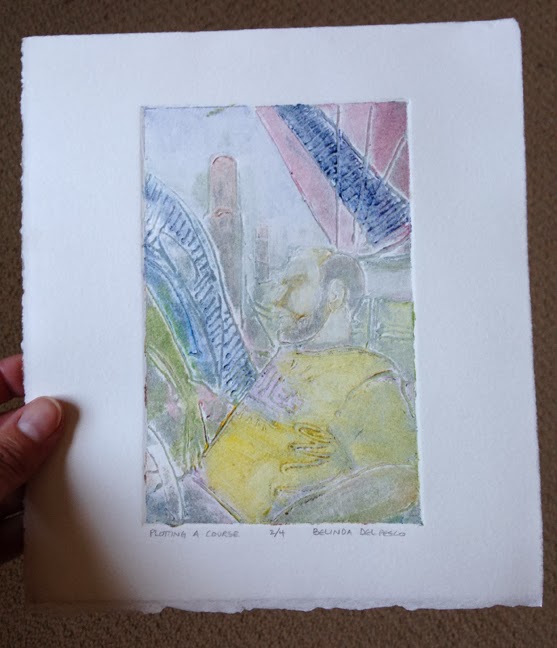
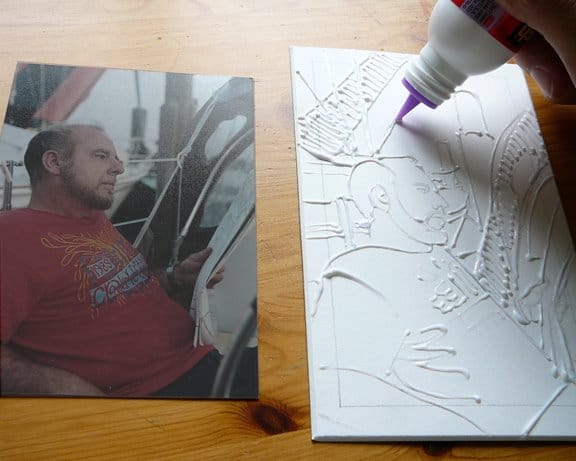
How do you seal the glue monotype if you are using pva and a water based paint?Otherwise will the water in the paint not dissolve the pva?
Would love to see a demo.
Margaret
Hello Margaret, I seal my collagraph plates with Liquitex High Gloss Varnish – this stuff: https://amzn.to/375Cr5i
Once the varnish is dry, it seals the plate from all moisture. Just like acrylic paint, the varnish dries and is no longer water-soluble. I’ve never used PVA glue to seal a plate, so that might require a little bit of experimentation. Thanks for your feedback on the demo video!
Belinda
Yes please. Step by step would be amazing. Thanks in advance.
Hi Rochelle, If you decide to forge ahead and give it a go, before I make a demo, please let me know which parts appear mysterious to you, and I’m happy to explain, or do a zoom call to discuss. 🙂
I love seeing your work, and please know that it inspires me. Such wonderful talent – your colographs are so fun!
Hi Jenifer, Thanks so much for letting me know. I hope your collagraph experiments are fruitful and fun! Happy printing!
It’s end of February 2019. I will check your YouTube Channel for this method. I’m sure I’ll be interested in what ever you have posted there. Beautiful quote by HT – thank you!
Hi Jean, Thanks for the feedback and interest on this collagraph method. There is no glue collagraph tutorial video on my channel yet. More shooting and editing to do, related to the mistakes I made – and then a narration/voice over to record/edit. It’s in process though!
Hi Belinda. I know little about art and would love to see a video of the process.
Hi Loretta, Thanks for your visit. This method will be a video tutorial soon. In the meantime, feel free to peruse my other printmaking videos here: https://www.youtube.com/bdelpesco
Love this, and the quote, which I’ll tell my writing students. Wonderful.
You amaze me.
XOXOXOXO Barbara
Yes please! Would love to see a video. What printing inks do you use when you plan to use watercolour paints?
I would love to see a video of the making of a glue collograph!!! Please!!
Missy from the bayou
Yes please. Your step by step pictures are always helpful, but a video would be great. Thank you for your sharing.